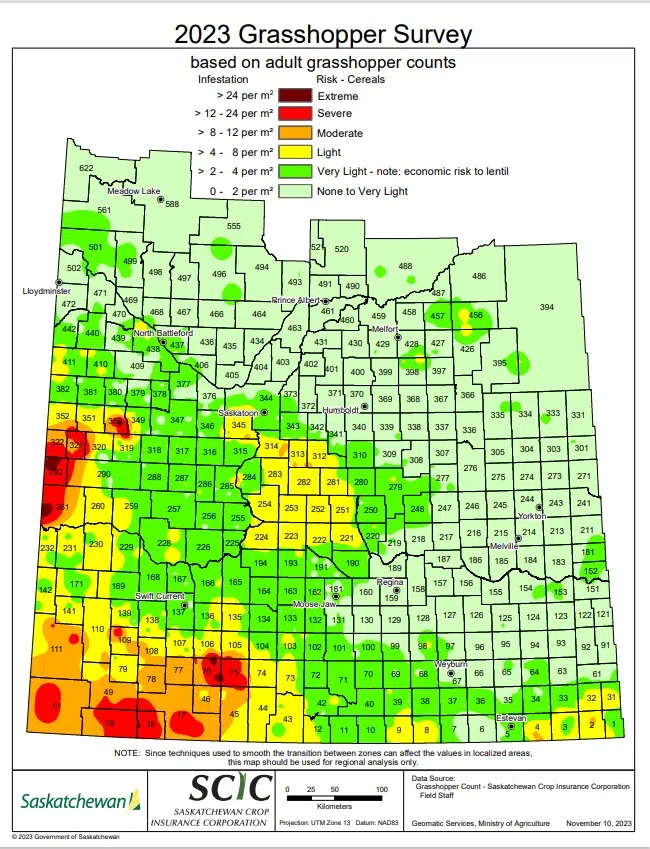By Alex Kozroski
The Saskatchewan government released a map last week after extensive surveying in Saskatchewan revealed the places most ravaged by grasshoppers over the spring and summer.
The map showed waves of grasshoppers hit the southwest, leaving destroyed crops in their path. Every year, between 1,100 and 1,200 areas are surveyed, creating a precise image of the grasshopper’s destruction.
Dr. James Tansey, a provincial specialist in Insect/Vertebrate Pest Management for the Government of Saskatchewan, co-ordinated much of the map-making process.
“The mild conditions that we’re having right now in the winter are going to contribute to their survival,” stated Tansey. “I suspect that the large populations that we had in the late summer with the long warm period had the potential for those eggs to develop.
“From what we saw in 2022, I think we’re probably looking at a repeat of what we saw this year, barring a cool wet spring.”
READ MORE:
- Grasshoppers causing headaches for Sask. farmers
- Expert says warm, dry conditions to blame for huge grasshopper population
- Entomologist at Ag in Motion says grasshoppers worse than previous years
A very strong regulator of grasshopper populations would be cool and wet weather, which leaves them prone to fungal infections and disease transmission.
The eggs were laid in July and August of last year, an especially warm and dry summer in the southwest. Due to these conditions, embryonic development could reach a point where the insects will be more durable and numerous.
This survey targeted assessments at four roadside sites per rural municipalities for grasshopper density. High local populations may not be reflected in the map.
There are several factors that can influence next year’s populations, including the number of grasshoppers present in a region. These include temperature and precipitation, both during the current growing season and in the following spring.
“For the coming spring, there is no replacement for actually getting out in your fields, so I encourage growers and agronomists to get out and evaluate the populations based on established thresholds,” Tansey said.
“Canola and soybean are relatively tolerant, so 14 to 15 per square metre. Both of those crops can take a fair bit of grasshopper full-year feeding before you know you’re going to see a yield hit.”
Of 85 species of grasshopper in the province, only about four of them are typically in high enough populations to cause damage to crops. The main species plaguing many farmers’ main source of income are the two-striped grasshopper and the lesser migratory grasshopper. It is common that these small-winged pests will travel up to 100 kilometres a day.












